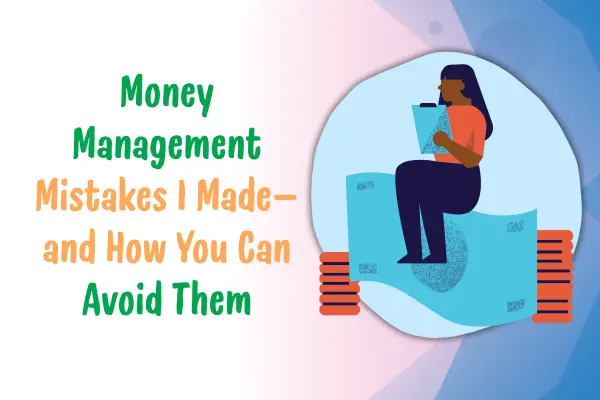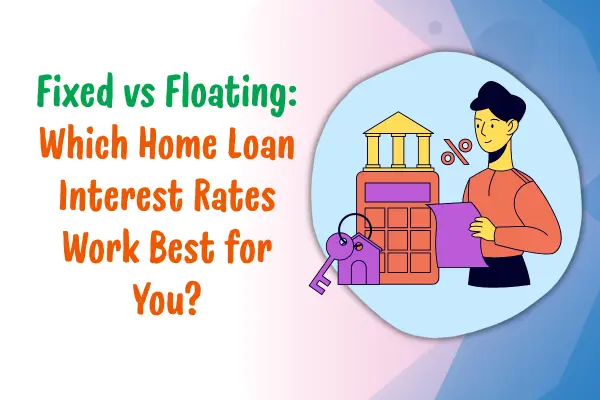What Is a Fixed Interest Rate in Home Loans?
When it comes to home loans, what is Fixed vs Floating, one of the most important decisions you’ll make is choosing the type of interest rate: fixed or floating. Let’s start by understanding what a fixed interest rate really means — and how it can impact your financial journey.
🏡 What Is a Fixed Interest Rate?
A fixed interest rate in home loans simply means the rate of interest you agree to pay remains constant for a specified period — often several years or even the entire loan tenure.
So, no matter how market interest rates rise or fall, your Equated Monthly Installment (EMI) stays the same. This predictability can be a huge relief for borrowers who like certainty and want to plan their monthly budgets without surprises.
Think of it like locking in the price of fuel for your car — if petrol prices go up or down, you still pay the same agreed-upon rate at the pump every month. That’s the fixed-rate comfort.
💡 Example: Fixed Rate in Action
Let’s say you take a $200,000 home loan at a fixed interest rate of 6% per annum for a loan tenure of 20 years.
Using our home loan interest calculator, your monthly EMI would come to approximately $1,432.86 every single month — and it will remain the same for all 240 months.
Even if market interest rates go up to 7% or down to 5%, your EMI remains unchanged.
This stability gives you peace of mind — you know exactly how much you owe each month, which makes budgeting and long-term planning easier.
✅ Who Should Choose a Fixed Interest Rate?
Fixed-rate home loans are not for everyone, but they’re ideal in the following scenarios:
- First-time homebuyers: You may be new to handling large monthly payments. Knowing your EMI won’t change helps ease financial pressure.
- Stable income earners: If you have a fixed salary or predictable monthly income, you might prefer the consistency of a fixed EMI.
- When interest rates are low: If the current market rate is historically low, locking it in for years can save you from future hikes.
- Conservative borrowers: If you’re risk-averse and don’t want to gamble with fluctuating rates, fixed is the safer bet.

❌ Downsides to Be Aware Of
While fixed interest rates offer stability, they may not always be the most cost-effective option in the long run. Here’s why:
- Higher initial rates: Fixed interest rates are usually 1% to 2% higher than floating rates.
- No benefit from rate cuts: If the market rate drops, you won’t save — you’re stuck with your original higher rate.
- Prepayment charges: Some lenders impose fees if you try to pay off the loan early. (Always check the terms!)
Still, for many people, the peace of mind outweighs the potential savings from a floating rate.
📊 Bonus Tip: Try Our Interest Calculator
Before you decide, it’s smart to run the numbers yourself. With our free Home Loan Interest Calculator on Click2Calc, you can:
- Enter your loan amount, tenure, and a fixed interest rate
- See your monthly EMI instantly
- Calculate your total interest payout over the full term
Want to compare a 6% vs. a 7% fixed rate over 15 years? Do it in seconds. Thinking about shortening your tenure? See how your EMI changes. It’s the simplest way to plan ahead with confidence.
🧠 Final Thought
In simple words, the fixed interest rate meaning in home loans is all about financial stability. It shields you from rate fluctuations and helps you stay in control of your monthly budget. Yes, it might cost a bit more upfront, but the trade-off is predictability — and for many homeowners, that’s priceless.
In the next section, we’ll explore the flip side: floating interest rates — and whether the flexibility is worth the risk. Stay tuned!
Understanding Floating Interest Rates: How Do They Work?
If fixed interest rates give you predictability, floating interest rates give you flexibility — and potentially, savings. But how exactly does a floating rate work, and is it the right choice for your home loan? Let’s break it down in simple terms.
🌊 What Is a Floating Interest Rate?
A floating interest rate, also known as a variable interest rate, is one that fluctuates over time. It’s linked to a benchmark rate — such as the repo rate set by the central bank — and moves up or down based on market conditions.
So, your EMI can increase or decrease during your loan tenure depending on how the market behaves.
For example:
If you take a loan at 8.5% floating interest and the benchmark drops by 0.5%, your interest rate may reduce to 8%. That means lower EMI or a shorter loan term.
On the other hand, if rates rise, your EMI may go up too — unless your bank adjusts the tenure instead.
💡 Real-Life Example of a Floating Rate Loan
Let’s say you borrow $200,000 at a floating rate of 8.5% for 20 years. At this rate, your EMI would be about $1,735.79 per month.
Now, imagine a year later the interest rate drops to 7.5%. Your revised EMI could drop to $1,610.46, saving you over $1,500 annually — without you doing anything!
Of course, the opposite is also true. If the rate goes up to 9.5%, your EMI may rise to $1,861.55 — which could affect your monthly budget.
That’s the nature of floating interest: it flows with the market.
🔄 How Floating Interest Rates Are Structured
Most floating-rate home loans are structured like this:
- Base rate or benchmark rate (e.g., repo rate, MCLR)
- Spread or margin added by the bank (usually 1-3%)
- Total interest = benchmark + spread
So, if the repo rate is 6.5% and your bank adds a 2% margin, your interest rate is 8.5%.
Whenever the repo rate changes, your interest rate changes accordingly. Banks typically review these rates every 3 to 6 months, and your EMI may be revised after the reset period.
✅ Who Should Consider Floating Rates?
A floating interest rate might be the right fit for you if:
- 📉 You believe interest rates will fall in the future
- 🧮 You can manage flexible EMIs — especially if your income is stable or growing
- 🏦 You plan to prepay the loan early, since many banks don’t charge penalties on floating-rate loan prepayments
- 🔍 You regularly monitor the market and want to benefit from dips in interest rates
In short, if you’re financially flexible and don’t mind a bit of risk, floating could save you thousands over time.
❌ What Are the Risks?
With rewards come risks. Here are a few things to be cautious about:
- 📈 Rates may go up unexpectedly, increasing your EMI burden
- 🕐 Budgeting becomes harder when monthly payments aren’t predictable
- ⌛ Rate reductions may take time to reflect in your loan due to reset cycles
If you’re someone who prefers stability or has a tight monthly budget, these fluctuations may feel stressful.
📊 Bonus Tip: Simulate Rate Changes with Our Calculator
Before you commit to a floating-rate home loan, try running different scenarios with our Home Loan Interest Calculator:
- Try your current rate (e.g., 8.5%) and see the EMI
- Now enter a reduced rate (e.g., 7.5%) to see potential savings
- Then enter a higher rate (e.g., 9.5%) to see your risk exposure
This hands-on approach will help you understand how even a 0.5% change can impact your monthly outflow and total interest.
🧠 Final Thought
So, how does floating interest rate work in home loans? It’s dynamic, flexible, and can reward you when the market is in your favor — but it’s not without its ups and downs.
The key is to assess your financial comfort, risk appetite, and future rate predictions. For some borrowers, the ability to save over the long term is worth the uncertainty.
In the next section, we’ll put fixed and floating interest rates head-to-head, comparing which one is cheaper over time — and why it depends on more than just numbers.
Fixed vs Floating Home Loan: Which Is Cheaper in the Long Run?
When choosing between a fixed and floating interest rate, one big question comes up:
“Which one is cheaper over the entire loan tenure?”
The answer? It depends on several factors — including market conditions, your loan amount, tenure, and how well you can handle uncertainty. In this section, we’ll compare both options side by side with simple numbers to help you make a smart decision.
💸 The Basics: How They Stack Up
Let’s start with a quick recap:
| Feature | Fixed Interest Rate | Floating Interest Rate |
|---|---|---|
| EMI Amount | Remains constant throughout | Can increase or decrease |
| Market Dependency | Not affected by market changes | Highly dependent on market fluctuations |
| Rate at Start | Usually higher | Usually lower |
| Risk Level | Low – stable payments | High – payment varies |
| Prepayment Penalty | Often applies | Usually no penalty |
| Ideal For | Conservative or first-time borrowers | Flexible or financially savvy borrowers |
So, which is cheaper over time? Let’s look at some real-world examples.
📊 Real Example: Comparing Loan Costs Over 20 Years
Imagine you’re taking a home loan of $200,000 for 20 years.
💼 Option 1: Fixed Rate – 6.5% per annum
Using our Home Loan Interest Calculator:
- EMI: $1,491.82/month
- Total repayment: $358,036.78
- Total interest paid: $158,036.78
🔄 Option 2: Floating Rate – Starts at 6%, varies every 5 years
Let’s assume:
- Year 1–5: 6%
- Year 6–10: 7%
- Year 11–15: 8%
- Year 16–20: 6.5%
We calculate each period separately and total it:
- Years 1–5: EMI ~$1,432.86
- Years 6–10: EMI ~$1,552.20
- Years 11–15: EMI ~$1,672.44
- Years 16–20: EMI ~$1,491.82
Let’s say the average monthly EMI over the full period turns out to be around $1,537.33, with a total repayment of roughly $368,959.20, and total interest $168,959.20
🧮 So Which Is Cheaper?
- Fixed Rate Total Interest: $158,036.78
- Floating Rate Total Interest (with assumed changes): $168,959.20
In this scenario, the fixed rate loan is cheaper by about $10,922 — but only if rates rise as predicted.
However, if floating rates fall or stay lower longer, it could save more in the long run.
📉 When Floating Can Save You More
Let’s say market conditions change and you get this:
- Year 1–5: 6%
- Year 6–10: 5.5%
- Year 11–15: 5%
- Year 16–20: 4.5%
Now the floating EMI reduces dramatically. Your total repayment could go as low as $330,000–340,000, making it much cheaper than fixed.
So if rates fall or stay low, floating wins.
✅ When Fixed Is the Safer Bet
But what if interest rates skyrocket?
Say they jump from 6% to 9% over the years. Then your floating EMI could become unaffordable, and your total repayment could cross $380,000, which is much more than the fixed rate option.
So if you’re the kind of person who values stability and peace of mind, the extra cost of a fixed rate may be worth it.
👤 Real-Life Scenarios: Which One Suits You?
Let’s say:
Scenario 1: Raj, a first-time homebuyer
- Monthly income: $2,500
- Fixed monthly expenses: $1,700
- Has little room for EMI fluctuation
👉 Raj should go for fixed interest — it helps him stay within budget.
Scenario 2: Priya, a senior tech consultant
- Monthly income: $8,000
- Predicts rates will drop soon
- Has a financial buffer and plans to prepay
👉 Priya could benefit from a floating rate — and save more in the long run.
📲 Try It Yourself with Our Interest Calculator
Want to see which loan type suits your exact situation?
Use our Click2Calc Home Loan Interest Calculator:
- Try fixed rate (e.g., 6.5%) and check EMI
- Change it to floating (start at 6%, then try 5% and 7%)
- See how your monthly payments and total interest shift
It’s the easiest way to see the future before locking into a loan!
🧠 Final Thought
So, is fixed or floating interest better for home loans? There’s no one-size-fits-all answer. It depends on your income, market outlook, risk tolerance, and how long you plan to keep the loan.
If you want peace of mind, go fixed.
If you’re chasing savings and can handle some volatility, floating might reward you.
In the final section, we’ll show you how to use our interest calculator step-by-step to help make the best decision for your financial journey.
How to Choose the Best Home Loan Interest Rate Using a Calculator
Choosing between a fixed and floating interest rate can feel confusing — but it doesn’t have to be. The best way to decide what’s right for your budget, your future, and your comfort level is by actually running the numbers.
That’s where an EMI calculator becomes your best friend.
In this section, we’ll walk you through exactly how to use the Click2Calc Home Loan Interest Calculator to compare both interest rate types — and make a confident, informed decision.
💻 What Is an EMI Calculator?
An EMI calculator is a simple tool that helps you instantly find out your monthly loan repayment amount based on three key inputs:
- Loan amount – the total money you plan to borrow
- Interest rate – either fixed or floating (start with the current rate)
- Loan tenure – the number of years you’ll take to repay the loan
It gives you:
- Your monthly EMI
- Your total interest payable
- Your total repayment amount
With this, you can simulate different scenarios — like rate changes — and see how they affect your loan.
🧭 Step-by-Step: How to Use the Calculator to Compare Rates
Here’s a practical guide to help you decide between fixed and floating interest:
Step 1: Enter Your Loan Details
- Go to the Click2Calc EMI Calculator
- Enter your loan amount (e.g., $200,000)
- Choose your loan tenure (e.g., 20 years)
Step 2: Compare Fixed Interest Rate Scenario
- Enter a fixed interest rate, say 6.5%
- Hit calculate
- Note down:
- EMI (e.g., $1,491.82)
- Total interest payable (e.g., $158,036.78)
- Total repayment amount
This gives you a baseline — a safe, stable scenario where nothing changes for 20 years.
Step 3: Try a Floating Rate Scenario
- Now enter a lower starting rate, say 6%
- Note down the EMI and total interest (e.g., EMI: $1,432.86)
- Now imagine the rate increases over time. Try:
- 7%
- 8%
- 9%
Each time, calculate and observe how much your EMI and interest change.
This helps you answer:
- Can I afford the EMI if the rate goes up?
- How much could I save if rates fall?
- Where’s my break-even point?
📉 Example: Comparing 6.5% Fixed vs 6% Floating
Let’s say:
- Fixed at 6.5%: EMI = $1,491.82
- Floating at 6% (initially): EMI = $1,432.86
Difference in EMI: Around $59/month
Annual savings: $708
Over 5 years: $3,540
Now ask:
Can you take that risk for a chance to save $3,500 in 5 years — or would you rather pay a bit more to lock in stability?
That’s how the calculator helps you see the bigger picture clearly.
🔍 Bonus Tips While Comparing
- ✅ Always compare total interest, not just EMI
- ✅ Factor in your income growth – will you earn more in 5 years?
- ✅ Consider prepayment – floating loans usually allow free early payments
- ✅ Think long-term – not just what’s affordable now
Use the calculator as many times as you need — it’s free, fast, and smart financial planning.
💡 Real-Life Use Case
Let’s say Meera, a young software engineer, is buying her first home. She:
- Earns $4,000/month
- Is eligible for a $250,000 loan
- Is unsure whether to lock in a 6.7% fixed rate or go for 6% floating
She uses the calculator to run both:
- Fixed EMI = ~$1,914.07
- Floating EMI = ~$1,798.65
She realizes she could save ~$1,385/year initially with floating. But when she tests a scenario with 8% interest, her EMI jumps to ~$2,092.43 — which would stretch her budget.
After seeing both outcomes, she decides to go fixed for the peace of mind — and plans to prepay with her annual bonus.
This kind of clarity is exactly what the calculator offers.
🧠 Final Thought
Still wondering how to choose between fixed and floating rate with EMI calculator?
Just follow this golden rule:
If you need stability, go fixed. If you can handle fluctuations and want to chase savings, explore floating — but run the numbers first.
Your choice should fit your lifestyle and goals, not just the lender’s offers.
And remember — the Click2Calc Interest Calculator is here to help you test, compare, and choose with confidence. Try it now before signing on that dotted line!

